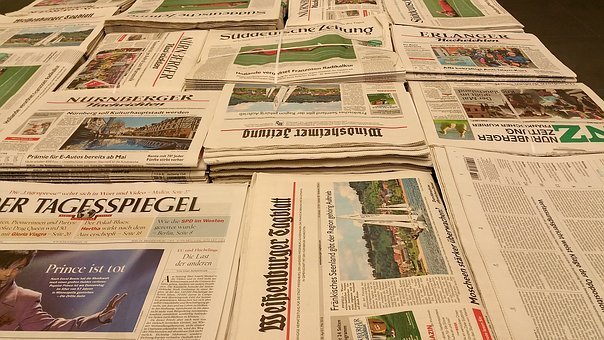FEATURE WRITING TECHNIQUES |
Terminology and Limitations
A feature is a non-fiction writing or essay that is not necessarily of length. Aims to describe, entertain, criticize, or inform accompanied by a review of a topic. Means of delivery are newspapers, magazines, journals, tabloids, or the like. The composition of the essay tends to be a special composition. Therefore, the problem approach through feature is very different from the approach through news.
Although there are many opinions about the definition of a feature, but in a nutshell the feature is a typical writing about an issue. It is also based on data and facts, not always in scientific writing. This is why feature languages are similar to short languages because they give priority to clarity and fluency in languages.
Unlike news that cannot be infiltrated by an opinion element, a feature as a unique composition is colored by the subjectivity and creativity of the writer. But, features are not opinions. Feature writers can make interpretations of existing facts, then enrich them with flowering language, or even winged languages.
In accordance with the writer's creativity, features can speak about many things. It can be about social sketches, the ups and downs of travel, the bitterness of life, history, uniqueness, someone's figure, the development of science and technology, antics, even about death.
As a typical writing, feature gives its own color to the face of print media. He wrote a freshness that makes the reader more relaxed or even more touched to enjoy the social reality that is presented through alluring words. The most loved feature usually contains human interest (humanitarian problems). Because, this element is a "language" as well as a "experience" universal for everyone. About the bitterness of life or pleasure, for example, everyone has experienced it to a different degree.
There are other universal languages that are worth enriching features. For example elements of humor, tears, uniqueness, innocence, bad luck, recklessness, and honesty. This spice will make up the recitation of the feature.
***

Steps to Write Feature
To write features, the problem is not as easy as writing news, both straight news and soft news. Especially, people are often burdened with the desire to write in a complex and great way. In fact, a principle in writing is to use language that is clear and easy to understand. Avoid using complicated language or terms, to the point that the writer himself does not know the meaning!
The principle of writing features is actually very simple; write features with stories. That is, we have to write like people talk. Use spoken language style, so it is not difficult for readers to understand it. Be relaxed when writing, don't be tense or feel burdened. Then pour out the concentration of the material to be written. In such circumstances, we write consciously and relax so that we are free from the atmosphere that writing is difficult to start and do not know how to end.
The basic requirements that are required in writing features are our skills and ability to speak good and right language. It is permissible to choose beautiful, poetic, and seductive words as long as the reader understands. Use short sentences and positive language rather than passive language or language that contains negative connotations.
Write Fun Read Features
To write a feature that is readable and impressive, at least three conditions must be considered:
The material or topic to be written must be really interesting and valuable. Preferably unique and original. If the topic is less interesting, it's better not to write and look for other problems that have more appeal.
The technique of writing it. A good feature is that it is presented in a speaking style. Clear presentation and clear flow. For this reason, the way to move from one point of thought to the next (transitional) strand of thought, as well as the skill of playing words, determines a writer who produces good features. A lot of feature material is actually trivial, but because it is presented in a compelling way and style, it becomes a readable and necessary feature. Conversely, unique and alluring material, can be boring if the writer is not able to package it attractively.
Practice and read. Actually there are only two conditions to become a good feature writer; write on and read on. Then added with experience. The more often read other people's features, the more vocabulary we get. It must be remembered that there is not a single school in this world that is able to make aspiring writers to write features. It is perseverance in writing and reading that produces reliable writers. Training and courses only lead the way to become a feature writer. With practice, writing skills become "perfect."
Feature Character
Reading the definition does not always lead us to a clear understanding of features. Therefore, the following will try to understand features by discussing the properties contained in this paper.
Factual. A feature is writing based on facts. He is not a fictitious work that departs from the ideas or fiction authors. Feature themes are a reality that takes place in the community. Therefore, short stories, for example, cannot be classified as features.
Is explained the problem. Feature is not reporting (preaching) events or problems to the audience, but he explains the event / problem by expressing the answer why and how in more detail. In explaining the problem, especially for the type called news feature, he prefers exposure to the background of the problem to lead people to an understanding of an issue. It may also be, he invites the reader into the description of trying to see prospects.
Do not impose opinions. At first the feature is the same as the news, no author's opinion should be entered. But in its development, even though the inclusion of the writer's opinion must still be prevented, the subjectivity and interpretation of the writer cannot be dammed. In expressing this interpretation, a writer is not in the place to present his interpretation merely an interpretation. But it must be accompanied by facts that support this interpretation. That is, an interpretation offered to the reader must be supported by the arguments that underlie it. The argument may be theoretical, but it will be more meaningful if the argument is shown in facts that provide strong support for the ideas given.
Does not always have to answer 5W + 1H in full. Another difference between news and features is in giving a portion for the 5W + 1H answer (what, who, when, where, why, and how). Good news must be complete to answer the six main elements. Features for certain types can ignore the answer of one of the six elements.
The writing is not curbed upside down. In writing news, journalists recognize the pattern of writing top heavy (weight up). That is, at the beginning of the news loaded with facts that are important or most interesting to the reader. While at the end it is less attractive making it easier for editors to cut it. This structure is commonly called an inverted pyramid.
Feature can ignore this structure because it is not burdened with the task of "preaching." Features can be written with a more free structure, provided the storyline, grouping problems, and the language used to deliver the problem is made clear.Most are more resistant to time. For some, features are more durable than ordinary news. If it is written today and there is no place to load it tomorrow, long or three days, then even the coming week is not classified as stale. It's just that, not all features have such endurance. News feature, for example, is a type of writing that must be broadcast immediately.
Single angle feature. In seeing a problem, the feature always chooses an angle. The narrowed the problem, the better. In the parable it is said; talk about porcelain plates, don't talk about crockery. In other words, features see one aspect of a problem. Other aspects of the same problem, should be discussed in other features as well.
Lead is written attractively. Feature leads rely more on an attractive description in attracting the attention of the reader. The pattern of feature writing is not as clear (as strict) the pattern of writing a news lead (news leads always put the element of what or who for staight news; and prioritizes who, when, where, or why for soft news). Even so, there are several types of feature leads that are considered quite effective in "persuading" the audience to read.

